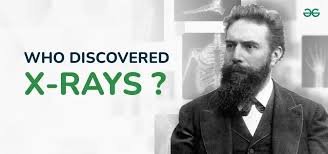Wilhelm Conrad Röntgen: The First Nobel Laureate in Physics
Wilhelm Conrad Röntgen, a German physicist, made history by becoming the first recipient of the Nobel Prize in Physics in 1901. His groundbreaking discovery of X-rays in 1895 revolutionized the field of medicine and continues to hold immense significance today.
Pioneering Discovery of X-rays
Röntgen’s accidental discovery of X-rays while experimenting with cathode rays in 1895 marked a turning point in science and medicine. He observed a strange fluorescence emanating from a barium platinocyanide plate placed at a distance from the cathode ray tube. Further investigation revealed that these invisible rays could penetrate through opaque materials like paper and wood, but were absorbed by denser materials like bones. Röntgen named this new type of radiation “X-rays” due to their unknown nature.
Revolutionizing Medical Diagnostics
The discovery of X-rays had a profound impact on the field of medicine. It provided a non-invasive way to visualize internal structures of the human body, enabling doctors to diagnose fractures, tumors, and other ailments with unprecedented accuracy. X-rays became an essential tool for medical diagnosis, saving countless lives and transforming healthcare practices.
Beyond Medicine
The applications of X-rays extend beyond medicine. They are used in various fields, including security screening, materials science, and astronomy. X-rays play a crucial role in non-destructive testing, ensuring the safety and integrity of structures and materials.
Why This News is Important for Government Exams
Understanding the significance of scientific discoveries like X-rays is essential for government exam aspirants, particularly those aiming for careers in science, healthcare, or education. Here’s why:
- Science & Technology Awareness: Government exams often emphasize scientific literacy and awareness of groundbreaking discoveries. Knowing about X-rays and their impact demonstrates a well-rounded understanding of scientific advancements.
- Public Health & Medical Services: The role of X-rays in medical diagnostics is a crucial aspect of public health and healthcare services. Familiarity with this technology is beneficial for aspirants aiming for careers in healthcare administration or public policy.
- General Knowledge: General awareness sections of government exams often test knowledge about historical events and scientific discoveries. Understanding the significance of the Nobel Prize and X-rays can be advantageous.
Historical Background
The discovery of X-rays built upon earlier advancements in the field of electricity and magnetism. Scientists like Heinrich Hertz and James Clerk Maxwell had laid the groundwork for understanding electromagnetic radiation. Röntgen’s experiments with cathode rays, a type of electron beam, led him to the serendipitous discovery of X-rays.
Key Takeaways from This News
| Takeaway | Description |
|---|---|
| First Nobel Prize in Physics | Wilhelm Conrad Röntgen was the first recipient of the Nobel Prize in Physics in 1901. |
| Discovery of X-rays | Röntgen’s accidental discovery of X-rays in 1895 revolutionized medical diagnostics. |
| Impact on Medicine | X-rays provide a non-invasive way to visualize internal body structures, aiding in diagnosing fractures, tumors, and other ailments. |
| Applications Beyond Medicine | X-rays are used in security screening, materials science, and astronomy. |
| Importance for Government Exams | Understanding X-rays demonstrates scientific literacy and knowledge of their role in public health. |
Important FAQs for Students from this News
1. What was the significance of Wilhelm Conrad Röntgen’s discovery of X-rays?
Röntgen’s discovery of X-rays revolutionized medical diagnostics by providing a non-invasive way to visualize internal structures of the human body. This led to more accurate diagnosis and treatment of various diseases.
2. When was the Nobel Prize in Physics first awarded, and who was the first recipient?
The Nobel Prize in Physics was first awarded in 1901 to Wilhelm Conrad Röntgen for his groundbreaking discovery of X-rays.
3. What are the applications of X-rays beyond medical diagnostics?
X-rays are used in various fields, including security screening, materials science, and astronomy. They are also employed in non-destructive testing to ensure the safety and integrity of structures and materials.
4. How did the discovery of X-rays impact the field of medicine?
The discovery of X-rays transformed medical practice by enabling doctors to diagnose diseases and injuries more accurately and effectively. It led to significant advancements in medical imaging and treatment techniques.
5. Why is it important for government exam aspirants to know about the discovery of X-rays?
Understanding the significance of scientific discoveries like X-rays demonstrates a well-rounded understanding of scientific advancements and their impact on society. It can also be beneficial for aspirants aiming for careers in science, healthcare, or public policy.

